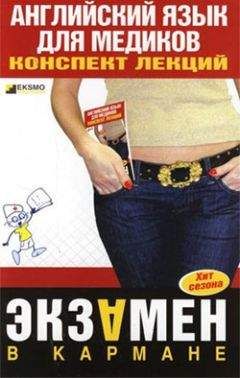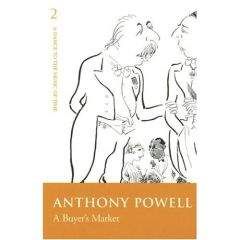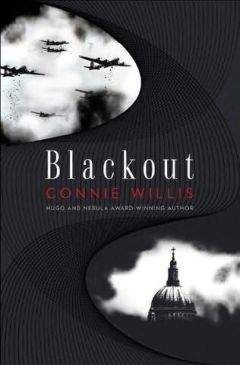Medium veins in the range of 1-9 mm in diameter have a well – developed intima, a media consisting of connective tissue and loosely organized smooth muscle, and an adventitia (usually the thickest layer) composed of collagen bundles, elastic fibers, and smooth muscle cells oriented along the longitudinal axis of the vessel. Venous valves are sheet-like outfoldings of endothelium and underlying connective tissue that form flaps to permit unidi rectional flow of blood.
Large veins, such as the external iliac, hepatic portal, and vena ca-vae, are the major conduits of return toward the heart. The intima is similar to that of medium veins. Although a network of elastic fibers may occur at the boundary between the intima andmedia, a typical internal elastic membrane as seen in arteries is not present. A tunica media may or may not be present. If pre sent, smooth muscle cells are most often circularly arranged. The adventitia is the thickest layer of the wall and consists of elastic fibers and longitudinal bundles of collagen. In the vena cava, this layer also contains well-developed bundles of longitudinally oriented smooth muscle.
New words
vein – вена
low-pressure – низкое давление
to have – иметь
collagenous – коллагеновый
elastic – упругий
although – хотя
walls – стенкы
coun terparts – копии
unlike – в отличие от
exten sions – расширения
intima – интима
to prevent – предотвратить
reflux – рефлюкс
sheet-like – подобный листу
inflammation – воспламенение
because – потому что
longitudinal – продольный
flaps – откидные створки
external – внешний
iliac – подвздошный
hepatic – печеночник
Запомните следующие застывшие словосочетания:
To have a good time From _ morning till night All _ day long
A lot of
Перед названиями университетов артикль не употребляется.
E. g. I shall study at _ St. Petersburg University.
My grandfather graduated from _ Oxford University
Вставьте артикль, где необходимо.
1. Did you have… good time in the country?
2. Oh yes… weather was fine.
3. We were out of… doors from… morning till… night.
4. We played… football,… volley-ball and… other games.
5. We саше… home late at… night and went to… bed at once.
6. Look at… clock! It is… quarter past ten. Go to… bed at once.
7.. sun rises in.east and sets in. west.
8. We spent last summer in. Ukraine.
9. We often went to. wood and gathered lot of… mushrooms.
10. My friend likes to play… chess. He is ready to play… chess all… day long.
11. Willi comes from… very old country on… Nile. It is called… Ethiopia.
12… Ethiopia is… beautiful mountainous country.
13. Nick is… young man. He wants to become… engineer.
14. Very often in… evening his new friends and he walk about… city talking about their native countries.
15. Marina lives in. Ukraine.
16. She lives in… small village near… Kiev.
17. She is… librarian. In summer she has… lot of work work.
18. I want to enter. Moscow University.
19. My Friend lives in… America
20. He studies Indies… history at… Harvard University.
Answer the questions.
1. What are veins?
2. In general do veins have more collagenous connec tive tissue?
3. Do veins have less muscle and elastic tissue than their arterial coun terparts?
4. What valves do veins contain?
5. How veins can be divided?
6. How much the venules are long?
7. Where are venules important?
8. Where do neutrophils stick to?
9. What do contain medium veins?
10. What are the major conduits of return toward the heart?
Make the sentences of your own using the new words (10 sentences).
Find the definite and indefinite articles in the text.
The heart is a muscular organ, composed primarily of cardiac muscle tissue, which contracts rhythmically to pump blood throughout the body. Structure of the heart wall: the walls of the heart are constructed in layers that are similar to those of the major blood vessels.
Endocardium is the innermost layer of the heart and is lined with endothelium. Veins, nerves, and components of the impulse conducting system are present in the subendocardial connective tissue layer.
Myocardium is composed of branching, anastomotic cardiac myocytes attached to one another by intercalated disks. Most of these cells are involved in the pumping function of the heart; others are specialized for the control of rhythmicity (impulse conducting system) or secretion (myocardial endocrine cells).
Epicardium is a serous membrane that forms the visceral lining of the pericardium. Its external mesothelium is supported by a loose connective tissue subepicardial layer.
Cardiac skeleton is composed mainly of dense connective tissue and consists of the annuli fibrosi, the trigonum fibrosum, and the septum membranaceum.
Cardiac valves are composed of dense fibrous tissue covered by endothelium. Unidirectional flow is maintained from the.
Right atrium to the right ventricle (tricuspid valve).
Right ventricle to the pulmonary artery (pulmonic semilunar valve). Left atrium to the left ventricle (mitral/bicuspid valve).
Left ventricle to the aorta (aortic semilunar valve).
Tricuspid and mitral valves are attached to papillary muscles by cords of fibrous connective tissue (chordae tendineae) and prevent reflux of blood into the atria during ventricular con traction (systole). Semilunar valves (aortic and pulmonic) prevent reflux of blood back into the ventricles during ventricular relaxation (diastole).
Impulse conducting system of the heart consists of specialized cardiac myocytes that are characterized by automaticity and rhythmicity (i. e., they are independent of nervous stimulation and possess the ability to initiate heart beats). These specialized cells are located in the si-noatrial (SA) node (pacemaker), intern-odal tracts, atrioventricular (AV) node, AV bundle (of His), left and right bundle branches, and numerous smaller branches to the left and right ventricular walls. Impulse conduct ing myocytes are in electrical contact with each other and with normal contractile myocytes via communicating (gap) junctions. Specialized wide-diameter impulse conducting cells (Purkinje myocy-tes), with greatly reduced myofilament components, are well-adapted to increase conduction velocity. They rapidly deliver the wave of depolarization to ventricular myocytes.
New words
heart – сердце
muscular – мышечный
cardiac – сердечный
which – который
contract – контракт
rhythmically – ритмично
to pump – качать
endocardium – эндокардиум
innermost – самый внутренний
components – компоненты
conducting system – проведение системы
to present – представлять
subendocardial – внутрисердечный
impulse – импульс
fibrosi – фиброзные кольца
Запомните следующие застывшие словосочетания.
What's the use?
At the cinema
At the theatre
At the shop
At the market
To the cinema
To the theatre
To the shop
To the market
To go for a walk
Вставьте артикль, где необходимо.
1. Once there lived… man who was very fond of fold.
2. He used to say: «While I have my gold, I am… happiest man in… world».
3. And so all his life saved… money.
4. One day he was traveling in… desert of… North Africa.
5. He lost his way.. He had no… food or… water.
6. He was almost dying of… hunger.
7.. heat was terrible.
8. There were only… stones and… sand around.
9. What is. use of gold?
10. Let's go to… shop. I must buy… bread and milk.
11. I was at… cinema yesterday.
12. What. film did you see?
13. Oh, I saw… very good film.
14. Ithink it is… best film of… year.
15. Do you oft go to… theatre?
16. No, I don't. I like to go to. theatre, but I. very busy.
17. I work from… morning till… night.
18. I even have no… time to play piano.
19… lot of… tourists from… different countries come to… Paris.
Answer the questions.
1. What is the muscular organ?
2. What is heart primarily composed of?
3. What is the structure of the heart wall?
4. What is endocardium?
5. With what is endocardium lined?
6. What are present in the subendocardial connective tissue layer?
7. What is myocardium composed?
8. What is cardiac skeleton composed of?
9. What are cardiac valves composed of?
10. What do rapidly deliver the wave of depolarization to ventricular myocytes?
Make the sentences of your own using the new words (10 sentences).
Find the definite and indefinite articles in the text.
Intrapulmonary bronchi: the primary bronchi give rise to three main branches in the right lung and two branches in the left lung, each of which supply a pulmonary lobe. These lobar bronchi divide repeatedly to give rise to bronchioles.
Mucosa consists of the typical respiratory epithelium and an underlying lamina propria similar to that of the trachea. However, a layer of loosely woven smooth muscle (muscularis mucosae), which separates the lamina propria from the submucosa, is present.
Submucosa consists of elastic tissue with fewer mixed glands than seen in the trachea.
Anastomosing cartilage plates replace the C-shaped rings found in the trachea and extra pulmonary portions of the pri mary bronchi. These plates become progressively smaller asairway diameter decreases.
Bronchioles do not possess cartilage, glands, or lymphatic nodules; however, they contain the highest proportion of smooth r muscle in the bronchial tree. Bronchioles branch up to 12 times to supply lobules in the lung, which are bounded by connective tis sue septa. The smallest conducting bronchioles are called terminal bronchioles.
Bronchioles are lined by ciliated, simple, columnar epithelium with nonciliated bronchiolar (Clara) cells. Goblet cells are pre sent in large bronchioles. A smooth muscle layer interlaces the elastic fibers of the lamina propria. The musculature of the bronchi and bronchioles con tracts following stimulation by parasympathetic fibers (vagus nerve) and relaxes in response to sympathetic fibers. Terminal bronchioles consist of low-ciliated epithelium with bronchiolar cells.
The costal surface is a large convex area related to the inner surface of the ribs.
The mediastinal surface is a concave medial surface.
The left lung has a deep cardiac impression.
The mediastinal surface contains the root, or hilus, of the lung.
The pulmonary ligament is a double fold of pleura hanging inferior to the root of the lung.
The diaphragmatic surface (base) is related to the convex sur face of the diaphragm. It is more concave on the right due to the presence of the liver. The apex (cupola) protrudes into the root of the neck. It is crossed by the subclavian artery anteriorly.
The hilus is the point of attachment for the root of the lung. It contains the bronchi, pulmonary and bronchial vessels, lym phatics, and nerves. Lobes and fissures.
The right lung is divided by the oblique and horizontal fissures into three lobes: superior, middle and inferior.
The left lung has only one fissure, the oblique, which divides the lung into upper and lower lobes. The lingula of the upper lobe corresponds to the middle lobe of the right lung.
Bronchopulmonary segments of the lung are supplied by the seg-mental (tertiary) bronchus, artery, and vein. There are 10 on the right and 8 on the left.
Arterial supply: Right and left pulmonary arteries arise from the pulmonary trunk. The pulmonary arteries deliver deoxygenated blood to the lungs from the right side of the heart.
Bronchial arteries supply the bronchi and nonrespiratory por tions of the lung. They are usually branches of the thoracic aorta.
Venous drainage. There are four pulmonary veins: superior right and left and inferior right and left. Pulmonary veins carry oxygenated biblood to the left atrium of the heart.
The bronchial veins drain to the azygos system. They share drainage from the bronchi with the pulmonary veins.
Lymphatic drainage: Superficial drainage is to the bronchopulmo-nary nodes; from there, drainage is to the tracheobronchial nodes.
Deep drainage is to the pulmonary nodes; from there, drainage is to the bronchopulmonary nodes.
Bronchomediastinal lymph trunks drain to the right lymphatic duct and the thoracic duct.
Innervation of Lungs: Anterior and posterior pulmonary plexuses are formed by vagal (parasympathetic) and sympathetic fibers. Para-sympathetic stimulation has a bronchoconstrictive effect. Sympathetic stimulation has a bronchodilator effect.
New words
lungs – легкие
intrapulmonary bronchi – внутрилегочные бронхи
the primary bronchi – первичные бронхи
to give – давать
to rise – повышать
lobar bronchi – долевые бронхи
to divide – разделять
repeatedly – неоднократно
loosely – свободно
woven – сотканный
smooth – гладкий
submucosa – подслизистая оболочка
costal – реберный
surface – поверхность
onvex – выпуклый
apex – вершина
to protrude – высовываеться
superior – выше
right – право
left – оставленный
inferior – низший
innervation – иннервация
Образование множественного числа существительных:
a cat – cats
a dog – dogs
а саr – cars
a watch – watches
a dress – dresses
a dish – dishes
a box – boxes
a potato – potetos
Запомните форму множественного числа следующих существительных:
a goose – geese
a tooth – teeth
a foot – feet
an ox – oxen
a man – men
a woman – women





![Rick Page - Make Winning a Habit [с таблицами]](https://cdn.my-library.info/books/no-image-mybooks-club.jpg)